Ford has announced it will be bringing a new – and compact-sized – truck to market in about four years. That’s something which doesn’t exist anymore.
Not new, anyhow.
The last compact-sized truck you could buy new was also a Ford – the Ranger – which was retired after the 2011 model year. Since then, your options have been mid-sized (which is closer to what full-sized used to be) or super-sized, today’s Behemothian full-sized trucks. Some of which are so huge they come with a step-ladder built into the bed.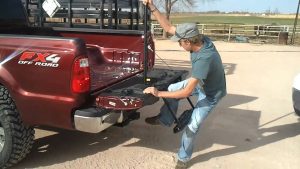
Seriously.
So, something more manageably-sized would be welcome.
But what Ford has on deck won’t really be a truck. It will be more like a downsized, modernized El Camino – or Ranchero, the Ford version of the same thing – from back in the day.
In other words, a car with a bed.
Not that there’s anything wrong with that.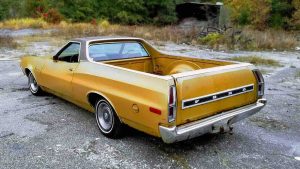
In fact, there’s a lot that’s potentially good. Provided, of course, you don’t actually need a truck.
Lots of people fall into that category. It’s the same category, basically, that has made crossovers so successful. They are SUV-looking vehicles which aren’t really SUVs (the real ones are based on trucks) but offer some of the real-deal SUV’s utility – interior space, ride height – without the real SUV’s liabilities (bulkiness, thirstiness).
Similar deal here.
The new “truck” – tentatively named the Courier – will be based, first of all, on a front-wheel-drive car (the current Focus) just like most crossovers – with all-wheel-drive likely to be available as an option. This is a good thing because either way, it ought to be better in the snow than the rear-drive-only El Camino and Ranchero.
Like two-wheel-drive (rear-drive) trucks, the Elco and Ranchero were light in the tail, which isn’t good for traction, even in the dry. They also sat pretty close the ground – and clearance can be as important in the snow as whether you’ve got traction.
Or even AWD.
If Ford gives the new “truck” seven or eight inches of clearance – about what many current crossovers have – even the FWD version should be better in the snow than a 2WD/rear-drive actual truck. 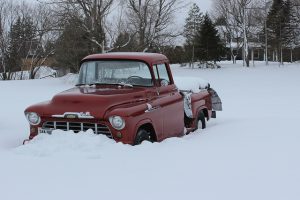
But it won’t be four-wheel-drive – except in the marketing sense.
Not that there’s anything wrong with that, either.
Four-wheel-drive (“4WD” or “4×4”) used to mean the system you found exclusively in trucks. It meant part-time (usually) 4WD and so rear-drive unless the driver engaged the system, which then split the power 50-50 front to rear.
AWD systems are also (usually) always on – and automatically route power from the wheels that are slipping to those which aren’t – in an almost infinite ratio, almost infinitely variable.
This helps with high-speed handling as well as traction. It is why many high-performance cars are also AWD.
Most truck-type systems are meant to be engaged only when the vehicle is dealing with severe conditions such as heavy snow, mud or off-road terrain.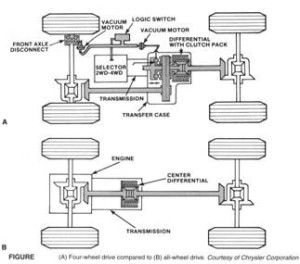
Truck-type 4WD has a traction advantage in heavy snow, mud and off-road due to the additional mechanical leverage of 4WD Low range gearing, engaged via a two-speed transfer case -a feature most AWD systems lack.
But, there is no high-speed handling/cornering advantage.
In fact, truck 4WD is not meant to be engaged on dry, paved roads – and should be disengaged unless it is really snowing or the going is really rough.
AWD is a handling advantage on dry (and wet) roads because it has more flexible power-transfer capabilities. Some systems can route 100 percent of the power to the front or the rear wheels – and any ratio in between – as well as modulate power to individual wheels (truck-type 4WD cannot do this).
So unless you actually do go off-road, need to deal with deep snow and mud – AWD is arguably the better choice.
Truck-type 4WD has another disadvantage vs. AWD: weight. The heavier-duty components – including most especially the truck-type 4WD system’s two-speed transfer case – can add several hundred pounds to the curb weight of the vehicle, which makes it thirstier and slower.
The Focus-based Courier probably won’t be able to tow (or carry) as much as a “real” truck. In part because it will be a small “truck” but also because there won’t be a big V8 up front – or even a big V6 – under its hood. And because there won’t be a heavy-duty bolt-on subframe underneath it, either.
Like the car it’s based on, the Courier will be a unibody design – and will be powered by a small four cylinder engine, possibly turbocharged.
The old Ranger – when ordered with its optional V6 – was rated to pull just under 6,000 lbs., which was stout for a little truck and much more than most cars (and car-based crossovers) can tackle
But if you didn’t order the V6, the Ranger’s tow rating dropped to just 2,200 lbs.- not much more than most cars and less than some of them.
Probably, the 2022 Courier will max out somewhere in between. It will almost certainly be rated to pull at least 3,500 lbs. – which would be more than the base/four-cylinder Ranger. If it can be designed to handle 5,000 or so pounds, it would be able to deal with more weight than most cars – and most car-based crossovers, too.
And it will probably get much better gas mileage than the V6 Ranger’s ravenous (for its size) 15 city, 19 highway. Those numbers, for reference, are just barely higher than the same-year and full-size and V8-powered Chevy Silverado 150, which posted 14 city, 18 highway.
If Ford manages to smuggle one of the diesel engines it currently sells in several of its European cars, the Courier’s mileage could be twice that of the old Ranger. This little latter-day El Camino/Ranchero should be more agile and easy to drive, too – given it’s really a car.
But no need to rub that in – when it’s a good thing!
…
Got a question about cars – or anything else? Click on the “ask Eric” link and send ’em in!
If you like what you’ve found here, please consider supporting EPautos.
We depend on you to keep the wheels turning!
Our donate button is here.
If you prefer not to use PayPal, our mailing address is:
EPautos
721 Hummingbird Lane SE
Copper Hill, VA 24079
PS: EPautos magnets are free to those who send in $20 or more. My latest eBook is also available for your favorite price – free! Click here. If you find it useful, consider contributing a couple of bucks! 


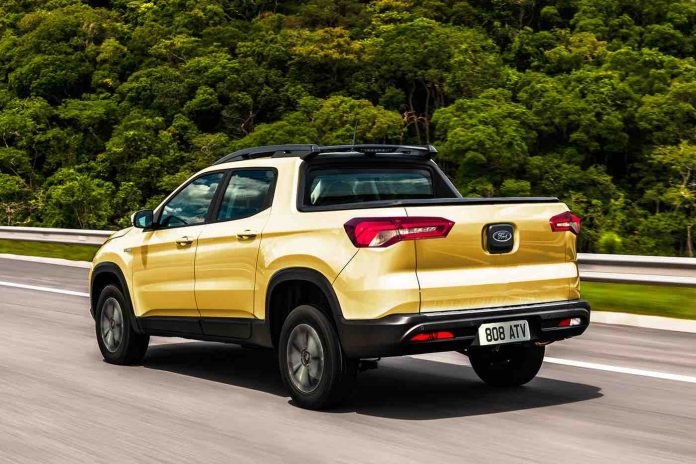



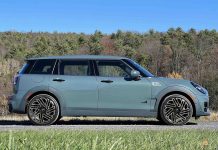

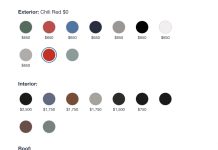



If they could make this and keep it simple and somewhat inexpensive, It’d be on my shortlist. I’ve long thought that most suburban pickup truck owners don’t need the massive lifted F350 Powerstroke that they use once per year to tow a pair of jet skis or a side-by-side. The truck is mostly compensatory in nature. Something like this is pretty great for most suburban real-world truck things: going car camping off of a dirt road, getting a few bags of mulch from Home Depot, and mostly being used as a passenger car. Of course, I know many people that use their pickups very hard. But something like this isn’t a ranch truck, or a truck for people who tow 20,000 lb trailers, or need to haul heavy things into oil facilities in the middle of nowhere Wyoming (where I grew up). That’s the domain of real truck pickups. But that’s not most pickup drivers, at least here in urban Utah, and I’d dare guess most of the country. The trick will be marketing it to many typical truck buyers.
I’d prefer something like this:
https://youtu.be/kFl23P30bNA?t=17s
It looks like a Ranchero got together with an early 2000’s Explorer Sport Trac and had a baby.
Now if only VW would bring us the Amorak….
With the 3.0 TDI…
Maybe the photo lies about the proportions. Maybe there is some sort of fold down real panel. But provided we are seeing what it is and the panel doesn’t open, this thing for certain duties would be less capable than a Mustang cargo wise. (for instance small but long items, say a length of pipe)
As to the concept of a small pickup or car pickup, yes its needed. Ford, please bring us the Falcon Ute from the grave you put Ford of Australia products into.
Ridgeline owners everywhere are saying: “See, told you.”
But I expect the Courier/Ranchero (they should totally go with Ranchero for it) will have even less of a payload than the Ridgeline.
Which is ok. These will be light-duty trucks, suitable for companies like HVAC repair where they need more of a toolbox on wheels than something that can haul a lot.
I’d like to be able to buy a new small Japanese pickup.
Like the ones which Toyota and Nissan were able to offer us twenty or thirty years ago.
Some dumbass apparently asked “what haven’t we made and tried to sell yet?” To which another dumbass replied “how about cutting the trunk off of a 4-door and adding a 2 foot pickup bed with no roof?” “So where do you put 2 adults, 2 kids, and the luggage” “This isn’t for them, it’s a party car, you know, you’re supposed to carry 3 friends and a cooler of beer in the bed” “Yeah, and if they have anything else they can tie it to the roof! COOL! Let’s build it!”
Hi Graves,
I don’t object to the idea behind this one; it’s not unlike the old VW Rabbit pick-ups of the late ’70s/80s and the Subaru Brat. It would work for me as I don’t really need a big 4WD truck – but I do need a bed to be able to cart the trash to the green boxes and such.
Ford will probably have an easier time selling this thing than the Focus it’s based on.
And the fuel mileage difference compared to Ranger will benefit Ford’s CAFE number, if EPA still has CAFE for long. Good article in WSJ:
https://www.wsj.com/articles/fuel-mileage-rules-are-no-help-to-the-climate-1533331613
“It would work for me as I don’t really need a big 4WD truck – but I do need a bed to be able to cart the trash to the green boxes and such.”
And if there is a big enough market segment that wants a truck ONLY “to cart trash to the green box,” this thing should be a Huge Success. 🙂
Hi Eric, My comment is not really slamming Ford so much (for a change), but more of a stab at our do-nothing-productive consumer culture. They are building what fits the bill, it can bring home groceries, and take trash cans to the dumpster, Teens & beer coolers to the beach, and football tailgaters and their gas grill to the game. That’s what it is, an S.U.C.K., Sport Uber Consumer Comffwagen, and IK don’t doubt that it will sell.
The Ranchero and El Camino failed because the Station Wagon was still thriving, and it had 4 doors and a bed with a roof. The minivan did in the S.W., and these half-breed crossovers have killed the minivan. However, I do think it is really just a society moving “progressively” toward idleness and gluttony that is “driving” the change in the automobile, pun intended!
Hi Graves,
See the latest rant, just posted: https://www.ericpetersautos.com/2018/08/06/jeep-vs-jeep/
Can’t exactly tell from that camera angle, but that looks like a super short, vestigial, token “truck bed.” Seriously lacking in utility.
The last Ranger, and previous generation Tacomas were relatively Light Duty. But they offered beds that were at least four…..sometimes up to six foot long. They were a sweet blend of economy and practicality, and in some cases even somewhat fun to drive.
Based on those parameters, this future Ranger appears to come up “SHORT.” 😉
Nothing but a new millennium Suburu Brat.
I look at the stock F-150s the company has bought for the techs in recent years and thought they were just jacked-up Rangers. Even the GMCs they switched to this year are about the same size. Maybe just a little wider.